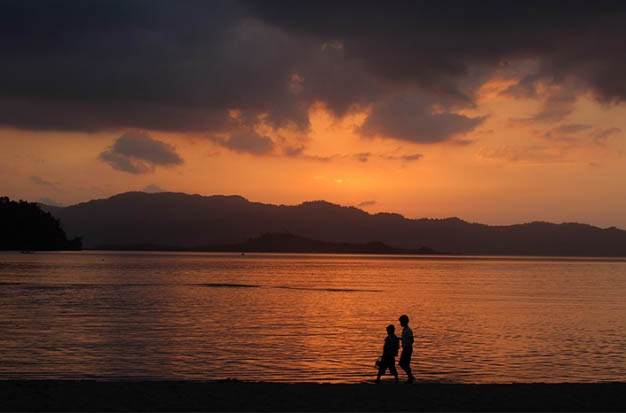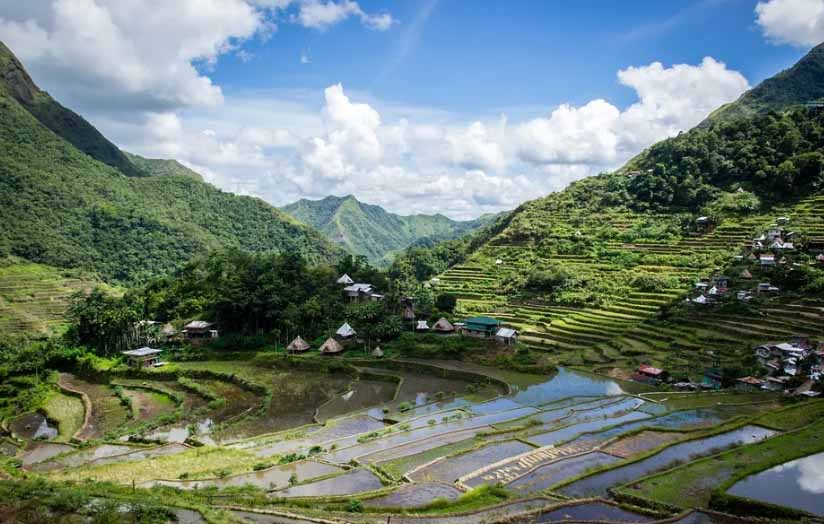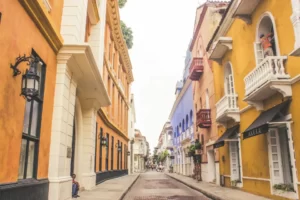
The Philippines is known for its stretches of golden sand, and even in the middle of the rainy season, you can probably find an island with sunshine.
The Philippines is best visited between November and April when it is dry season and all of the country’s stunning islands and outlying regions are easily accessible. The shoulder months of May and November are also great because they are less crowded while maintaining beautiful weather.
May through October is considered the “wet season,” but rain is not always present and rarely affects travel plans. Expect temperatures in the low 30s during this time, which means fewer people and more lush, green scenery, but you’ll still get to enjoy hot, sunny days.
It’s important to remember that the Philippines’ weather can be erratic. As early as August or as late as January, typhoons can occasionally form.
When Is The Ideal Time To Travel To The Philippines?
Since the Philippines only has two seasons, picking the ideal time to visit is fairly simple. The Philippines are best visited during the dry season. If you struggle with tropical heat, January and February’s weather may be a good option because of their cooler temperatures. Although it rarely rains during the dry season, keep in mind that it still occasionally does. Showers are typically brief and won’t disrupt your travel plans.
The best time to travel to the Philippines is during the dry season, which lasts from December through February. These months are the coolest and most pleasant for travel, bringing tourists to popular beach destinations like El Nido and Coron and increasing competition for hotel rooms.
Travelers do go to the nation in the rainy season. If you do this, you might want to think about going to the regions—mostly in the far south—that experience the least rainfall. Keep an eye out for weather warnings while you’re there to see if any typhoons are approaching. Also keep in mind that monsoon rains typically begin in the late afternoon, leaving the rest of the day free for sightseeing and other outdoor activities.
Traveling before the arrival of peak season or during the shoulder seasons is another option. The second-best time to visit the Philippines is between May and November, which are the country’s main shoulder months.
Weather In The Philippines
The Philippines only has two seasons, as is the case in other tropical nations: rainy and dry. Several situations defy this. For instance, the southeastern islands of the Philippines hardly have a dry season, while the dry and rainy seasons in the western Philippines are clearly distinguished. Generally speaking, the country experiences rain between May and October, and the dry season lasts from November to April.
However, climate effects like El Niño and La Niña, which can disrupt regular weather patterns and bring about droughts and flooding, respectively, can have a particularly negative impact on the weather in the Philippines. It is advised that you do some research before your trip because this weather phenomenon is unpredictable. Keep in mind that travel disruptions are more likely to occur during La Niña years.
The Climate Of The Philippines
Before we talk about the ideal time to visit the Philippines, we should note that different weather patterns exist depending on where you are in the world. There are five different climates in the Philippines: tropical monsoon, tropical savanna, tropical rainforest, humid subtropical, and oceanic.
This implies that while the country’s north may be experiencing the dry season, the other end may be experiencing entirely different weather patterns. Therefore, don’t think about the weather of the entire country; instead, think about the weather of the specific locations you will be visiting.
Typhoons In The Philippines
The Philippines is ravaged by up to ten typhoons each year. However, some typhoons can make landfall as early as May. Typhoon season runs from June to September. The Philippines’ wettest months of the year, July and August, see a rise in the likelihood of extreme weather.
In addition to the powerful winds, the typhoon season frequently features high tides, landslides, and humidity levels that are above average. As a result, traveling to the Philippines at this time might not be the best idea. During a typhoon, there may be few or no options for air or ground transportation. Additionally, it’s recommended that people stay inside, which may reduce your ability to sightseeing.
Typhoons don’t necessarily affect the entire country equally because the Philippines is made up of more than 7,500 geographically dispersed islands. The southern islands are less likely to experience a typhoon, or the impact may be less severe because these storms typically move from east to west before turning north.
When To Visit The Philippines In Spring
All across the nation, temperatures start to rise gradually in March. Early spring is one of the best times to visit because of the predominantly dry spring weather in the Philippines. Before the rainy season begins, now is the ideal time to explore the Philippines’ natural landmarks.
Beach hopping is also fantastic in the months of March, April, and May. The ideal conditions for surfing, scuba diving, and snorkeling are present during these months thanks to consistent winds and warm water temperatures.
In terms of the volume of visitors, spring is also the busiest season of the year. Always plan ahead and make reservations in advance because lodging in the most well-liked locations can become fully booked.

When To Visit The Philippines During The Shoulder Season: May – October
In the Philippines, shoulder season is typically brief and quiet, lasting only one month on either side of the busier rainy months and popular dry season. The end-of-term school holidays in April and May bring high levels of domestic tourists during this time, but you can save money on lodging if you time it right and there are fewer tourists around.
Exciting events like the month-long Magayon Festival in Legazpi in May, with nightly street markets, pop-up bars, and live music, and MassKara Festival, which brings flamboyant outfits and frenzied dancing to Bacolod in late October, add extra incentive for a shoulder season trip
When To Visit The Philippines In Winter
Generally dry and warm winters prevail in the Philippines. This is the best time of year to travel to the Philippines because the average temperature rarely falls below 20°C (60°F) and there is little chance of rain.
Hiking, tanning, swimming, and other outdoor activities are ideal in the tropics during the winter. Planning an active vacation to one of the nation’s top natural attractions or touring the cities and their rich historical and cultural heritage in the Philippines are both excellent choices at the moment.
However, keep in mind that good weather attracts a lot of people. Locals and visitors alike are particularly busy during Christmas and New Year’s. Booking in advance is crucial because, during the winter holidays, virtually every mode of transportation will be booked to capacity.
Festivals And Holidays In The Philippines
Filipino culture places a lot of emphasis on festivals and celebrations. No matter when you go, there will probably be a festival going on, but this is especially true in the first half of the year when the weather is also ideal for traveling to the Philippines.
The month of February is jam-packed with parades that resemble Mardi Gras and carnivals. The Suman Festival in Aurora and Ati-Atihan in Kalibo (Panay) stand out as the most noteworthy.
Spring is celebrated with important events, such as Boracay International Dragon Boat Festival (in April), and Flores de Mayo, which is celebrated all over the country in May.
Summer events like Pintados and Tinalak honor the country’s tribal culture and ancient traditions. Christmas, New Year, and Easter are also widely observed in the Philippines because it is a Catholic nation.
Every community in the Philippines, no matter how small or populous, celebrates at least a few festivals each year in honor of a patron saint, to give thanks for a bountiful harvest, or to honor a biblical figure. The main fiesta months are from January to May, but the exact dates can vary, so it’s worth planning your trip to see one of the big events. At these gatherings, everyone is friendly and welcoming. Days and days of dancing in the streets, free-flowing beer, and roasted pigs are all commonplace.
Conclusion
We prefer to go on vacation from November to April. May and October fall within those dates. Although there are fewer people and prices during the shoulder season, rain is still not a guarantee. In fact, we spent the first two weeks of May traveling to Siargao and Moalboal and experienced nonstop sunshine. We were prepared for brief rain showers if they did occur, knowing that they wouldn’t disrupt our entire trip.
If you want to find more interesting and beautiful places to vise, welcome to check our best-time-visit guide below!
- Best Times to Visit Chicago – What To Prepare – On The View
- Best Time to Visit New Zealand – What To Avoid – On The View
- Best Time to Visit Peru – Travel Guide In 2022 – On The View
- Best Time to Visit & Travel to Costa Rica – On The View
- Best Time to Visit Guatemala – November to April – On The View
- Best Time to Visit Panama – Everything You Should Know – On The View








